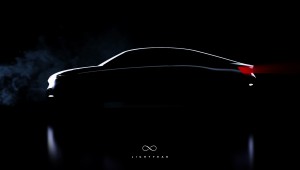By Anca Gagiuc on August 29, 2017 in Technology
We’ve been watching how solar power is slowly making its way in a variety of industries. The automotive industry has been working extensively with solar in recent years, with Tesla assuming a leading role. Most people, when talking about using solar energy to power cars, refer to sourcing electricity from solar panels. But a Dutch company has a different idea.
its way in a variety of industries. The automotive industry has been working extensively with solar in recent years, with Tesla assuming a leading role. Most people, when talking about using solar energy to power cars, refer to sourcing electricity from solar panels. But a Dutch company has a different idea.
Lightyear One is the creation of five Eindhoven alumni who have already built two solar cars, Stella and Stella Lux, for the Bridgestone World Solar Challenge Cruiser Class. (Both projects are prototypes of four-seater solar cars.) The startup Lightyear announced their plans to combine onboard solar cells with an efficient battery pack and an optimized design to deliver a road-legal, four-seat electric car that can charge itself directly from sunlight.
A car that can go the distance
“You can think of the Lightyear One as being as an electric car redesigned from the ground up to combine the best of solar cars and electric cars,” said Lex Hoefsloot, CEO of Lightyear, in a prepared statement. “It’s a revolutionary step forward in electric mobility because we are able to combine a great look with extreme efficiency. This first model makes science fiction become reality: cars powered using just the sun.”
The Lightyear One concept was unveiled in early July, touting a battery that can constantly replenish its power using the sun. In addition, the car can travel a range of up to 500 miles when fully charged. But most interestingly, the company claims that in the right sunny environment, such as Hawaii, the luxury sedan could potentially drive for months at a time between charges. This revolutionary feature solves for the notion that electric cars could be restricted to regions with reliable charging networks.
The development team behind Lightyear One said the car will be equipped with a charging port that would enable charging from an outlet, including even the regular household power socket. They claim that plugging the car into the standard 3.7 kW outlet for an hour would give the car enough power to travel around 25 miles.
The Lightyear founders emphasize the fact that electric cars, as we have them now, present a major problem—only a small 3 percent of the world’s population has easy access to a public charging spot in the vicinity. Therefore, until the infrastructure is in place, they won’t be able to use electric cars. Lightyear plays the “works-anywhere” card as a solution to the aforementioned issue.
Electric cars for all environments
“The Lightyear One is a statement to show that electric cars are ready for every corner of the planet,” Hoefsloot added. “It is the first step in our mission to make electric cars available for everyone.” Since the car does not require any charging points, it is especially well suited for areas where the adoption of electric cars is held back by the lack of charging options. The four-wheel drive sedan will even handle rough terrain, so you can take it almost anywhere.
Another feature of the system being used to power Lightyear One is its capacity to supply your house with solar energy. In fact, Lightyear One will be fitted with an ordinary household power socket to juice any device, regardless of your location. Furthermore, their FAQ section encourages future customers, when parked in places reserved for electrical vehicles, to “be so kind to connect your Lightyear One to the charging point so that the surplus solar energy can be used to charge the electric car parked next to you.”
The company won’t produce the One on a large scale. Only 10 cars will be delivered in 2019, with the next 100 expected in 2020. Pre-orders are available, but it won’t come cheap: reserving a Lightyear One will require a refundable €19,000 (around $21,700 at the current exchange rate) down payment, while the final cost is anticipated to be €119,000 ($135,800).


